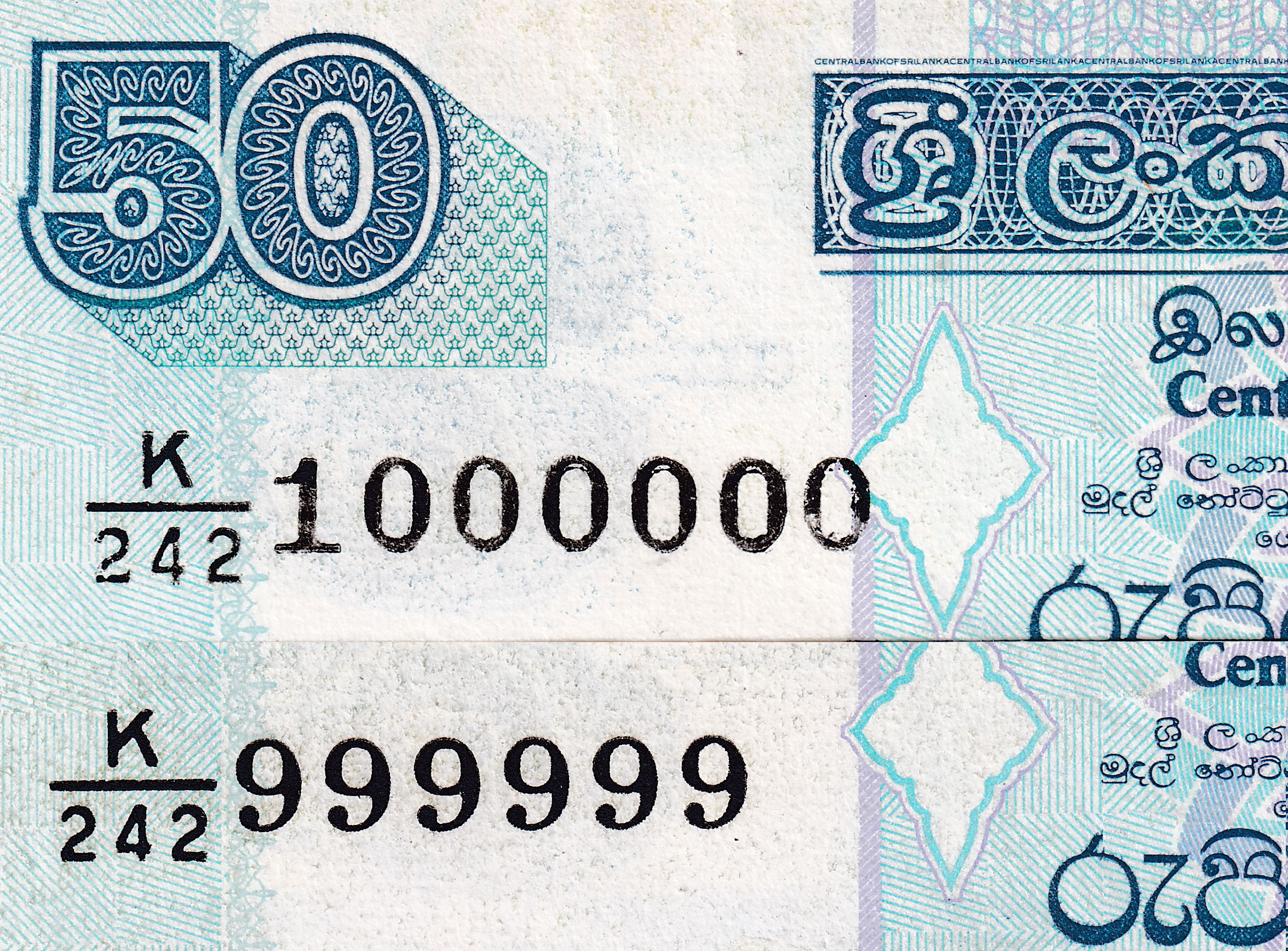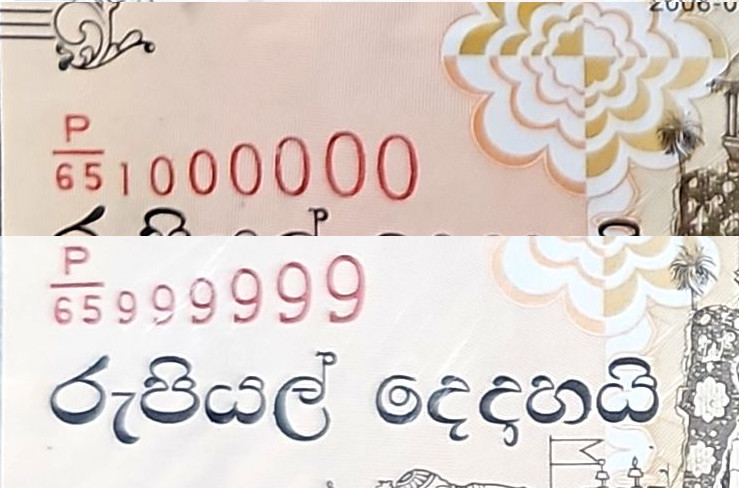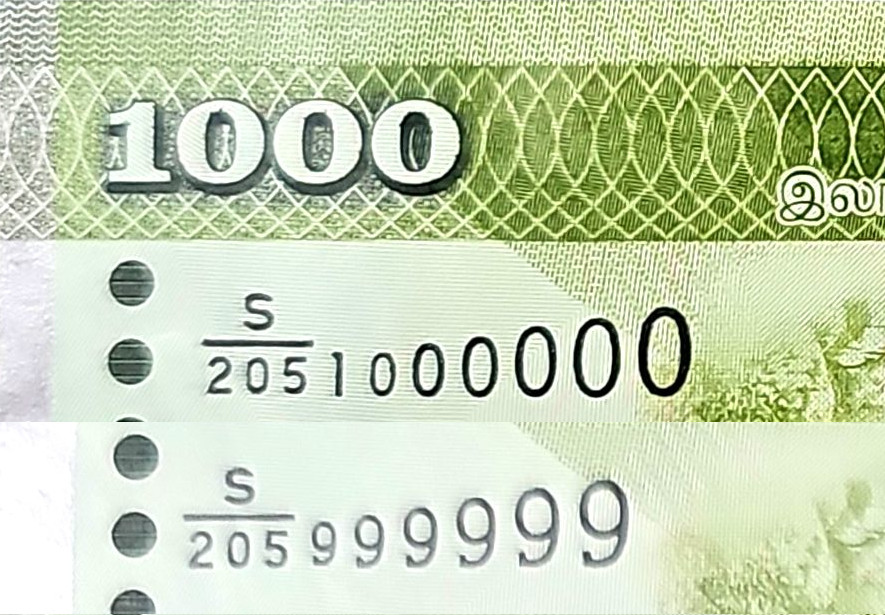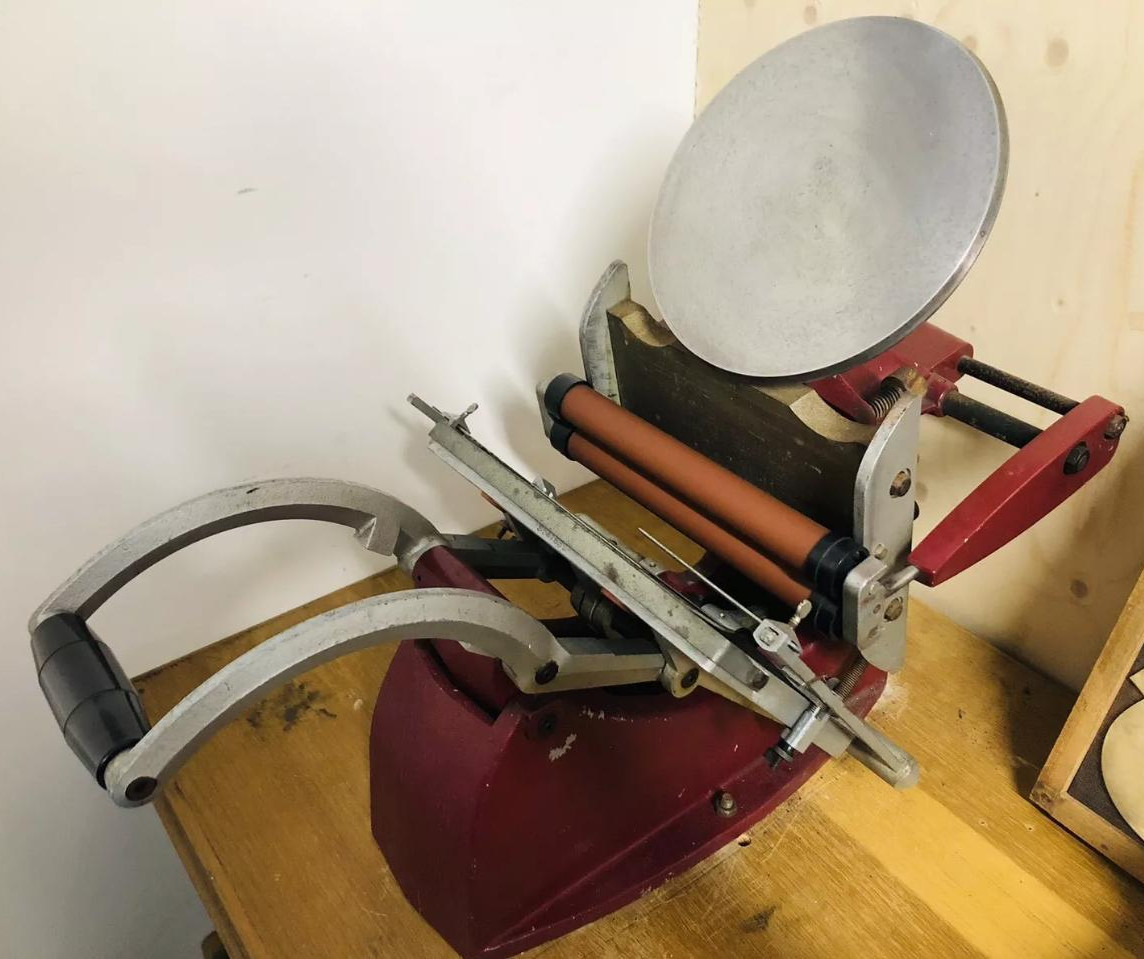The Millionth Note of a prefix
The last note of a prefix series has an extra digit. In the case of
notes from Sri Lanka where each prefix is printed with a Million notes
it has 7 digits rather than 6.

| 2004 Rs50 Note prefix K/242
The 1000000 serial shows a less clear strike (less force?) with ink
missing from most digits of the prefix and serial number
|

| 2006 Rs2000 Note prefix P/65
The Rs2000 was the first time the Serial Number was printed with an
increasing font size of digits.
The last digit 0 of 1000000 serial is misaligned and of the
same size of the previous digit 0.
|

| 2015 Rs1000 Note prefix S/205
Another example of the Serial Number printed with an increasing font
size of digits.
However the extra First digit 1 is larger than the next 0.
|
Above are images of Serials 999999 and the last 1000000, of a few Sri
Lanka Notes printed by DeLaRue, to illustrate that the 1000000 serial
number is printed poorly in comparison to the 999999 serial note.
I have selected the best examples I have for this illistration.
Rezwan Razack (IBNS) of
Indian Paper Money Museum said
It's possible that the DeLaRue printing facility used a specialized
technique or equipment to add the extra digit for issue note.
In general the extra digit might be added through:
- Overprinting: A secondary printing process adds the extra digit.
- Specialized numbering boxes: Some printing presses have
custom numbering boxes that can accommodate additional digits.
- Hand-stamping or hand-application: In some cases, special
serial numbers are applied manually.
 Richard Perera (IBNS) who had worked at DeLaRue said:
Richard Perera (IBNS) who had worked at DeLaRue said:
It looks like less ink to me, rather than less force,
necessarily. However, as the 1M S/N (ie 7 digits is the exception),
it could have been made on a manual platter letterpress
machine. Probably rather old, as seen for much commercial letterpress
these days like shown on right.
The Malta and SriLanka plants had several of these machines, all used for
replacement notes or for exceptional overprints if the note was being
made for commemorative purposes (standard note with an additional
overprinted shield or such) and for marking specimen notes.
Printing goes by the requirements of the country. Some allow star
notes or additional numbers and some require a fixed range with
consecutive Serials to be delivered.
Sometime after 2015 DeLaRue started using a Replacement note for the
1000000 note. From 2017, when they stopped the use of replacements,
and CBSL accepted bundles with non-consecutive Serials the 10000000
note was nolonger needed.
Although DeLaRue always used a different prefix for all Ceylon and Sri
Lanka replacements notes, DeLaRue did do proper replacements for other
countries that insisted on it like when Ceylon and Sri Lanka notes
were printed by Bradbury Wilkinson & Co. If we study the printing of
those Serials we may find a few which were printed by letterpress.
If we identify misaligned Serial numbers on notes they maybe, those
poorly printed by letterpress to replace damaged notes when a
different replacement prefix was not used.
For exanple notes printed by Bradbury
Wilkinson & Co.
If anyone has such a Ceylon or Sri Lanka pair of notes or even just
the note with 1000000 it will be very useful to scan the same way to
investigate how the process of printing the 1000000th note changed
with time and when they stopped. Please contact me at
kavanr @ gmail.com and contribute high-resolution
images.
I thank those who contributed to this discussion, and welcome more
comments.
I also thank Wassim Sattar for allowing me to to scan at 1200 dpi
the 2004 Rs50 pair of notes and Chanaka Sampath for contributing
images of 4 pairs of notes from their personal collections.
Part of notes.lakdiva.org.lk a website for
Banknotes of Ceylon and Sri Lanka since 1785.



 Richard Perera (IBNS) who had worked at DeLaRue said:
Richard Perera (IBNS) who had worked at DeLaRue said: